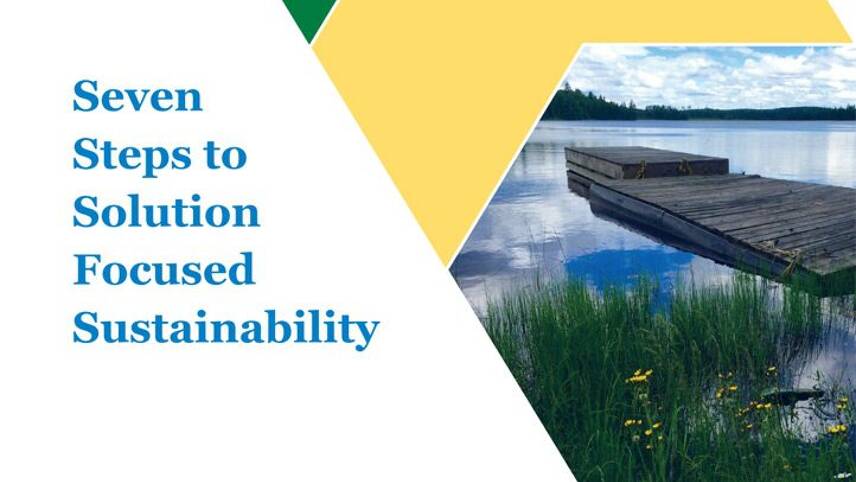Register for free and continue reading
Join our growing army of changemakers and get unlimited access to our premium content

From a 53% reduction in single-use plastic (in just a year), to soaring reusable cup sales, to a 300% increase in veganism over four years and on to double-digit growth rates in electric cars, sustainability is on the march.
With eyes firmly on business benefit and customer perspectives, organisations want to lead that march and use its energy to create clear strategic action. Of course, the most visionary leading businesses have already made world-class progress in recent years. Others may be further to the left on the bell-curve of sustainability maturity – possibly doing ‘enough’ to ensure responsible operations or perhaps beginning their journey.
But – it’s hard work, right? And – shouldn’t it be a ‘stick of guilt’ to beat ourselves with each day?
Actually, “no” to both those questions. Sustainability doesn’t have to be hard work if you approach it systematically, and it is a massive opportunity rather than a guilt-trip. Wherever you are on the maturity curve, Solution Focused Sustainability (SFS) is one approach that can help and its seven structured steps offer a planning approach to consolidate impacts, improve traction or polish up strategic ambitions.
At a high level, this low-risk framework engages your people, lifting energy and discretionary effort. When you use it to outline an ideal sustainable future, optimise what’s already in place and focus on small steps through confidence-building trials, SFS provides business payback too. Two crucial aspects are for people to be willing to collaborate and to have constructive interaction. The prime difference with SFS, rather than a problem focus, is that it inspires positive energy, opportunity, forward momentum and – unsurprisingly – sustainable solutions.
So – in a bit more detail – how would you approach each step?
Step One drills into the purpose of your organisation – the heart of its products, services and reason for existence. Alongside documents, online statements and marketing material, you can ask key questions like:
- What do your employees feel they’re there to do?
- What do your clients believe you do for them
- What do you mean to your supplier community?
A simple, clearly articulated purpose that people can rally around is key to build trust, inspire commitment and work towards a strong brand reputation.
At Step Two you can run workshops to go deeper into that purpose with those people and with broader groups. You might have done a ‘Materiality Review’ already, so a key check will be whether it’s still valid and relevant amongst changing circumstances. Wider sustainability trends, such as single-use plastics, are crucial in an absolute sense, but a focus on those factors alone might not optimise the impact for your organisation. Prioritising your sustainability focus, linked clearly to customer awareness, will help to choose which ‘horses to back’ for maximum benefit.
At Step Three you can ask people to vote on the factors through simple polls, employee ‘lunch and learn’ sessions, supplier reviews or client meetings. Rating your ambition for each factor (on a 1-10 scale) and agreeing a timescale to achieve those levels will start to structure real clarity.
Step Four is where you develop and test scenarios that represent those numbers – using solution-based forums, review sessions and interviews. Team competitions could also generate innovative or engaging ways to measure sustainability impacts. Areas like carbon can be measured absolutely, but community social value contributions need more creative performance indicators of course. It’s also key at this step to establish credibility through standards-based third-party accreditation or benchmarking.
Step Five is key to the Solution Focus approach – identifying small steps for progress. If you’re at a ‘three’ now, what will get you to ‘four’ in three to six months, one notch at a time? Using further SFS workshops, focused coaching or option development sessions, you can build a ‘progress canvas’ of specific actions. With modern organisations under such pressure, it’s essential to help people identify ‘what’s in it for them’ and why they should care enough to act with discretionary effort amongst busy schedules.
At Step Six, assess the resources you need to deliver progress. Working with functions like finance, learning and development or supply chain teams, you can map what works well now and identify areas where you need help. Naturally, it will also be key to work with operational delivery leads on options that make practical sense. You may need external partners to enhance your expertise, but make sure that they can truly deliver your principal factors from Step Two.
Step Seven is where you can build, refine or re-visit your ‘communication plan’ to achieve maximum impact from your story as you progress. Whether a stand-alone version, a section in the annual accounts or a fully integrated report, you’ll already have engaged your communications team and may have an external specialist reporting partner. However, one useful extra tool might be a (trusted) customer panel of ‘beta readers’ who can critique your story. They should check whether it’s coherent, inspiring, believable and clearly serves your Step One purpose.
Sustainability is rising fast, reflecting consumer recognition of human impacts and going well beyond ‘green’ campaigning. It’s an unprecedented opportunity to gain competitive advantage, increase people engagement and (whisper it) do more of the right things. Ultimately, we are all linked by a shared tomorrow, with customers, investors, government and the public pressing companies to prove how they’re making it a better one. Hopefully, these SFS Seven Steps offer you useful fresh thinking to shape a roadmap towards clear, actionable targets and a more responsible and inspiring growth business. If you want to read a little more detail, you can also download a free PDF at this link.



Please login or Register to leave a comment.